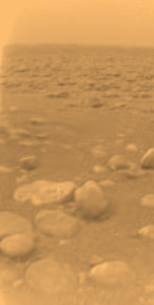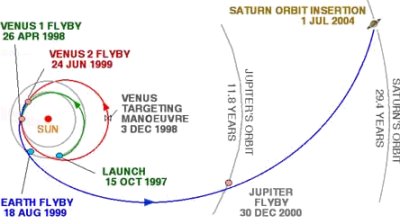Titan
activity
A spaceship named Cassini left Earth before most first graders were born, and two weeks ago the Huygen’s probe landed on Titan, Saturn’s largest moon and sent back pictures.

I did a lot of web research and borrowed a friend’s projector (thanks Max) and presented my first current events in science class. I gathered images of early astronomers, pictures of the spaceships and best-of-all picturs of the planets and their moons. I put these together in a (14MB!) power point presentation (sorry folks, even with my vast knowledge of Shockwave and Flash, PowerPoint is still the easiest multimedia tool).
I brought a news article and read it in between bits of the presentation (collected source material below). The whole class enjoyed learning how to pronounce Huygens and we talked about why I was showing drawings and paintings of the astronomers. (None of the kids guessed that photography had not been invented in the 1600s. Several of them said that the astronomers looked like kings – I would guess that is because they always show paintings of kings too.)
When we got the pictures of the planets and moons the kids were awestruck – lots of oohs and ahs. The pictures of Titan were not as exciting, but they did have fun guessing what the pictures were of as I told them that real scientists were also guessing, since no one can visit there and all we have is the data sent back by the Huygens.
We also talked about how cold it is on Titan. Ms. B brought in a thermometer and we talked about temperature measurement. We noticed in Astronomy that things are named after the people who first saw them, and the temperature scales are named after the people who made them up. I gave a brief history of temperature measurement, noting that the first practical thermometer was invented after the Galileo first saw Saturn.
I had prepared to do a science project where they could act out the scale of the solar systems (worksheet) from Teachable Moments in the News, but the presentation took a whole hour. Undeterred, Ms. B, their ispired teacher, agreed to do the acitivity during their afternoon P.E. class – so they all got to do “Planet P.E.” I’m sorry I missed that, but I heard rave reviews when I got home.
Timeline
1610: Saturn rings sighted by Galileo Galilei. Although he saw the rings first, Galileo did not know what they were. They appeared to him as ‘ears’ or lobes either side of the planet.
1612: Galileo sees that rings seem to vanish
1655: Dutch astronomer Christiaan Huygens solves mystery of vanishing rings and discovers Titan, Saturn’s largest moon (how to pronounce Huygens).
1675: French-Italian astronomer Jean- Dominique Cassini discovered Saturn’s four other major moons: Iapetus, Rhea, Tethys, and Dione, and discovered that Saturn’s rings are split largely into two parts by a narrow gap – known since as the “Cassini Division.”
November 1982: mission was proposed by a group of European and American scientists.
1984: NASA and ESA began a joint assessment study
November 1988: ESA officially adopted the project
1989: Congress approved funding for NASA’s portion of the mission
October 1997: Cassini Mission launched

07.03.04 Titan’s surface revealed
More about Titan
Titan is the largest moon of Saturn, the second largest in the Solar System (after Ganymede of Jupiter). It was discovered by Christiaan Huygens in 1655.
Titan’s rotation period of about 16 days is synchronous to Saturn (meaning the same side always faces Saturn). It is the only moon in the Solar System known to have clouds and a thick, planet-like atmosphere.
Surface temperature 94K (-180 degrees C)
Titan, Saturn’s largest moon, is a mysterious place. Its thick atmosphere is rich in organic compounds. Some of them would be signs of life if they were on our planet.
How do they form on Titan? Will they help us to discover how life began on Earth?
Titan’s atmosphere is mostly nitrogen but there are also methane and many other organic compounds. Organic compounds form when sunlight destroys methane. If sunlight is continuously destroying methane, how is methane getting into the atmosphere?
On Earth today, it is life itself that refreshes the methane supply. Methane is a by-product of the metabolism of many organisms. On Earth, the simplest biological sources, such as those associated with peat bogs, rice fields and ruminant animals, continuously supply fresh gas to replace that destroyed by oxidation. Could this mean there is life on Titan?
Titan is not a pleasant place for life. It is far too cold for liquid water to exist, and all known forms of life need liquid water. Titan’s surface is -180°C. According to one exotic theory, long ago, the impact of a meteorite, for example, might have provided enough heat to liquify water for perhaps a few hundred or thousand years.
However, it is unlikely that Titan is a site for life today. But scientists are still currently puzzled by the amount of methane that persists in Titan’s atmosphere. Could there be oceans of methane on or under the surface?
– from the ESA site
So how do they know that the atmosphere is mostly nitrogen and has methane? All of the articles I read talked about methane on Titan, but none of them said how scientists know. If you have read this far and you know the answer, please leave a comment. None of the kids asked this question, but I’ve been really wondering.
